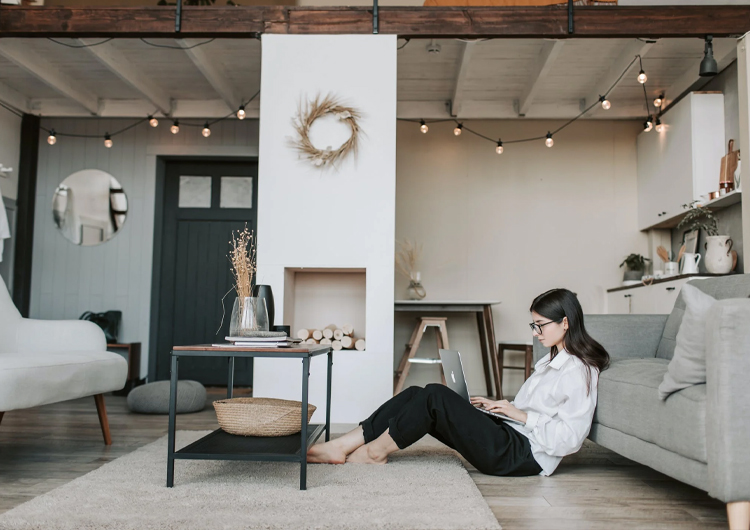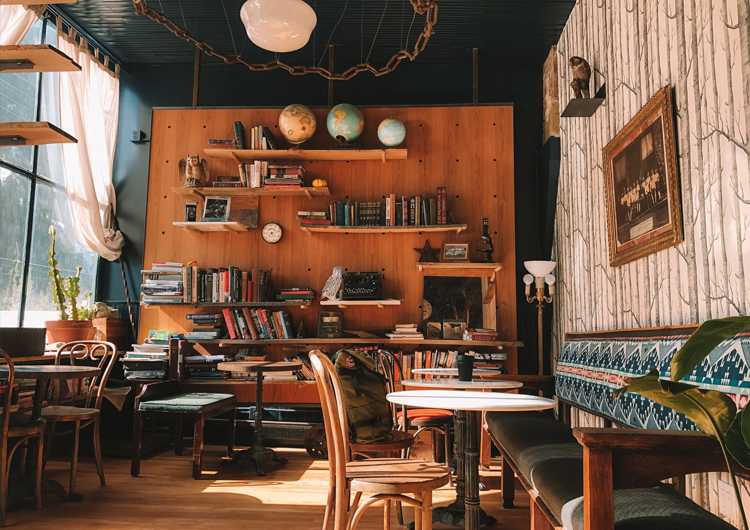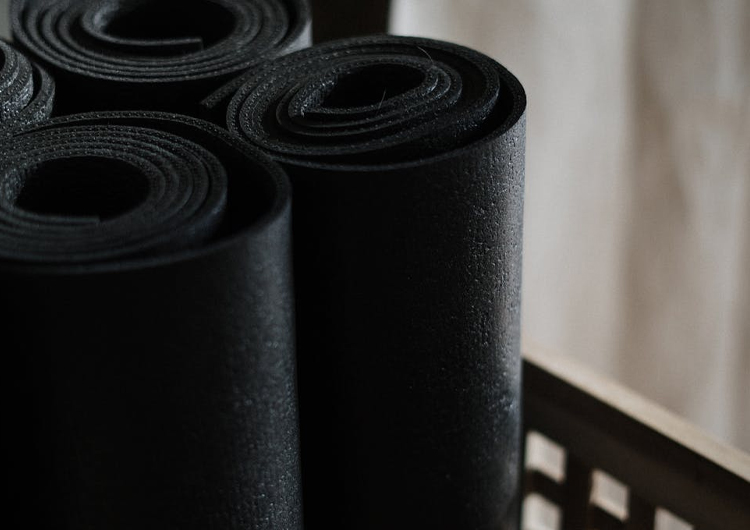The Ultimate Guide To Soundproofing A Room | Australia 2023
Soundproofing can be an issue that affects all types of homes. It doesn’t matter if you live in a high-rise apartment or a large suburban home, soundproofing may be necessary to address interior noise such as noisy kids or loud neighbours or exterior noise such as traffic. The good news is, soundproofing a room doesn’t have to be an expensive endeavour!
There are plenty of things you can do to soundproof your room, all at an affordable price. The first thing you’ll need to decide is whether you need to soundproof your room from the inside or against outside noise. Once you know what you need, try out our tips below to have your space soundproof in no time!

Which rooms need soundproofing?
There is no clear-cut answer for which rooms need soundproofing and which don’t. Instead, it’s up to you to decide which rooms in your house require soundproofing. Most rooms will be more comfortable to inhabit with added soundproofing, but you may have other concerns such as budget or time constraints.
Cheap ways to soundproof a room
There are a number of cheap, quick and easy ways to soundproof a room. Here are some of the best suggestions from BorisDoes experts:
- Soundproofing foam: You can find soundproofing foam for a relatively low price. The best news is that you can usually find soundproofing foam in a variety of colours, adding a nice aesthetic touch to your room.
- Adding furniture or decor: As simple as it sounds, adding furniture or decor to your room can help absorb sound. Sound bounces off hard surfaces such as hard flooring or blank walls. Add more furniture to help absorb this sound and keep your room peaceful and quiet.
- Using curtains: Curtains can act as a great visual barrier for nosy neighbours and are also great at sound dampening. Plush, thick drapery helps to absorb extra sound from the outside as well as unwanted traffic noise. Consider using specialised soundproof curtains to stop the noise, and double as blackout curtains which keep out sunlight – helping you get a better night’s sleep!
- Install window inserts: You might want to consider upgrading from curtains to window inserts. These are custom-made, clear glass panels that mount to the inside of existing windows and are very effective at blocking out sounds and reducing noise transmission. However, this option requires a significant investment which may not be ideal if you are on a tight budget. Soundproof windows are a great idea, but might not be the most cost effective option.
- Add area rugs: Thick area rugs can help mask sound coming from lower neighbours if you live in an apartment. Add a pad under the rug to enhance the sound masking without taking up additional space.
- Door weather stripping: Although interior doors don’t typically have weather stripping, adding some around the doorway’s perimeter can help muffle sounds. Peel and stick foam rubber weather stripping forms a tight seal and is affordable and easy to install. Felt is one of the most common weather-stripping materials, and it comes in rolls either with or without adhesive backing. Use an under-the-door draft stopper to seal off the gap along the floor and help improve soundproofing.
- Add upholstered furniture: Add additional furniture to help absorb unwanted noise. This helps to keep the noise from bouncing around the room as much. However, if you don’t have enough room for more furniture, adding thick blankets or plush throw pillows can also help.
- Hang acoustic panels: Although they cost a little extra, hanging acoustic panels is a great way to absorb unwanted sounds. They are easy to install and even come in different colours to match the colour scheme of your decor. Place the panels on the opposite wall of the sound source for maximum absorption. For a little extra cash, you can find large acoustic panels which can be installed with heavy-duty hardware or flush-mounted z-clips. You can use these independently or connect them to make a single large panel.
- Build a bookcase: Good news for bookworms! Bookshelves can help keep a room quiet. This is because shelves filled with books create mass, which absorbs sound. Make sure that your bookshelf extends all the way from the floor to the ceiling and fill it with plenty of books and magazines.
- Absorb vibrations: Vibrations transmit noise. If you have any booming pieces of machinery or equipment such as speakers, appliances, stationary bikes, and treadmills, noise is transferred to adjacent rooms. To dampen the vibrations and help keep the room quiet, place the equipment on a piece of dense foam rubber such as a home-gym floor mat.
- Soundproof a room for free using blankets: If you don’t have the budget to buy extra soundproofing tools, you can do it for free using blankets! Gather up all the extra blankets and quilts you have in your home. The thicker, the better! If you want to keep sound in, you’ll need blankets on all sides. If you want to keep sound from the outside out, you’ll need to put blankets over the source of these sounds. Most often, this will mean a specific wall, door, or window. To affix the blankets to the wall, you should use tacks, finishing nails, or screws, depending on how heavy they are. In addition to the blankets, if you have any large furniture pieces, you can position them against the wall to minimise sound. In particular, bookcases and headboards work great for this.

How to soundproof a room from the inside
There are a number of technical things to think about when it comes to soundproofing a room. But understanding them can help you to pinpoint the source of unwanted noise and make noise reduction efforts that will be effective. It may also help you to choose the right soundproofing materials of options from the list above.
- Identify the source of sound: It’s important to identify the source of the noise you’re trying to conceal. This can be anything – from television, an instrument, or traffic. These types of sounds can usually be contained to one specific spot. You can address the sound once you’ve found out where it is coming from.
- Identify the entry point: As the name suggests, the entry point is the area in your space where the sound enters your room. It could be an exact point or an entire wall which is often the case when it comes to shared walls in apartments or duplexes. Exterior windows are also common entry points for unwanted external noise, such as traffic.
- Identify the reflection point: When the sound enters your home, it will reflect at the same angle of entry. You’ll want to address the source of sound, entry point, and reflection point individually for the most efficient sound masking.
Permanent soundproofing solutions
Occasionally, you may have tried the methods above, but they just aren’t cutting it. In that case, consider tackling your soundproofing project at a construction level. Although you will find yourself spending more money on a construction-level task, the long-term benefits will be worth it. Specialised sound-absorbing materials can be incredibly effective with options including specially dense material, installation of double walls, and a wide range of commercial sound barrier products.
Typically these options are used for the construction of media studios, recording studios, music studios and other specialised buildings. But homes subjected to excessive noise like traffic, crowds, external music, general street noise, or industrial noise can benefit from effective soundproofing techniques.
In most cases, the level of soundproofing you need will often depend on noise levels outside your home or business. Some of those noises may be temporary (like construction noise) while some may be permanent (like airborne noise from a commercial district). Other noise might be permanent but slowly increasing (like traffic noise). Understanding what you're dealing with can help you make decisions about the applications of treatments and the use of different noise-canceling technologies.
Adding extra Gyprock
Although this technique requires a significant investment of time and money, it is one of the most effective ways to quiet a room. Cover the existing walls and ceiling with an extra layer of Gyprock (plasterboard). For extra protection against noise, secure the new Gyprock with a sound deadening compound called a dampening compound. You can use standard plasterboard or special sound-deadening plasterboard, which has a plastic polymer layer adhered to the back surface to reduce noise significantly.
While not as effective as adding specialised soundproofing panels or soundproofing windows, an additional layer of plasterboard has a less significant impact on the aesthetics of your home and can help to reduce sound transmission and achieve decibel reductions without the application of heavy materials and without making your home feel like a recording studio.
Soundproofing a home theatre
Home theatres are great for giving you the whole cinematic experience right in the comfort of your own home. However, to protect yourself against unhappy neighbours, make sure that your home theatre is designed to be soundproof. Create solid, non-vibrating walls that contain heavy density acoustic ventilation and are lined with heavy density sound dampening materials such as mass-loaded vinyl. We recommend using resilient mount clips with acoustic plasterboard to create a vibration break between the plasterboard and stud work.

Alternatives to soundproofing a room
Another way of soundproofing a room is by adding some background noise, which is an inexpensive alternative to soundproofing. You can easily play relaxing instrumental music or introduce a white noise machine into the environment, which can dilute unwanted sounds. When there’s something else to listen to, it becomes easier to drown out other unwanted noises even if they’re still happening.
- Sound machines: Many sound machines offer various background noise options, such as white noise, nature sounds, rain, and more. Another bonus – sound machines can also help you get better sleep! While they don’t remove the noise entirely, they are a great way to mask annoying noises. They are also great for temporary situations that you might face, such as construction noises outside your apartment. They are also much cheaper than most soundproofing options and are a good option if you are on a tight budget.
- Air purifier: Air purifiers are a great option because they have multiple benefits. The noise they create can help drown out unwanted sounds – and they help remove unwanted particles in the air at the same time! Look for a good mid-size purifier with the power to generate enough noise and cancel out other sounds in the room.
- Fans: If you don’t want or need to purify your air, adding a fan can be an inexpensive way to create white noise as well as to create extra airflow in your room. It doesn’t have to be a fancy or expensive kind – just something that will help you drown out any annoying sounds.
Conclusion
There are a range of options available to reduce sound transfer, tackle the intrusion of outdoor noises, and deal with internal transmission of sound in your home or business. From double glazing windows to heavy curtains, specialist acoustic tiles to solid-core doors. Whatever your chosen acoustic treatment, BorisDoes can help you find a tradie or expert to install it for you. Improve the sound quality in your home or business by following these tips for soundproofing a room.
Marketing for tradies | tips for growing your tradie business in 2024
Want to grow your tradie business? Learn all about marketing for tradies and get the tips and tricks you need to enhance your online presence, attract ...
What are the hardest things about starting a construction business?
When it comes to starting and managing a construction business, there are a number of challenges you may need to resolve. From finding good contractor ...
Trady vs. BorisDoes
A comparison of website builder and business management systems for tradies. Trady and BorisDoes do similar things - both allow tradies to create a ...
Jim`s Group. What do you need to know? (2023) | BorisDoes
What does Jim’s Group do? Jim's Group is Australia’s biggest franchise network, with more than 5,000 franchisees working across their 52+ divisions ...
What Makes A Good Electrician
An electrician has an important job when it comes to attending to your electrical needs. Perhaps you need to install a light, or you have faulty wirin ...
What A Handyman Can Do For You
Do you have some odd jobs around the house that would be perfect for a handyman? Perhaps you’re not entirely sure if a handyman is a right person to c ...